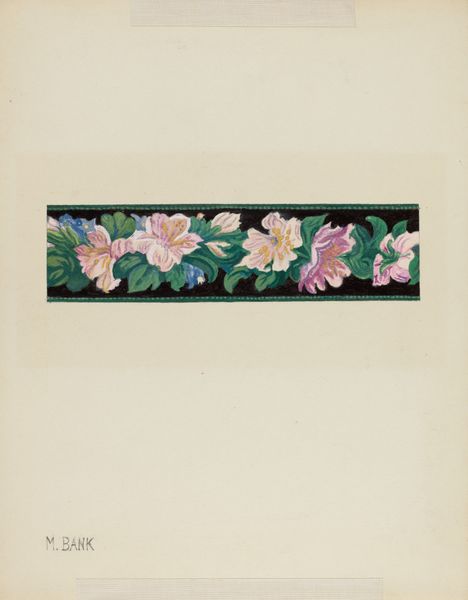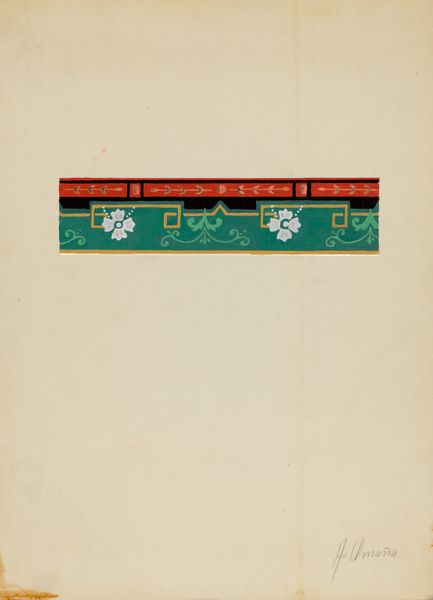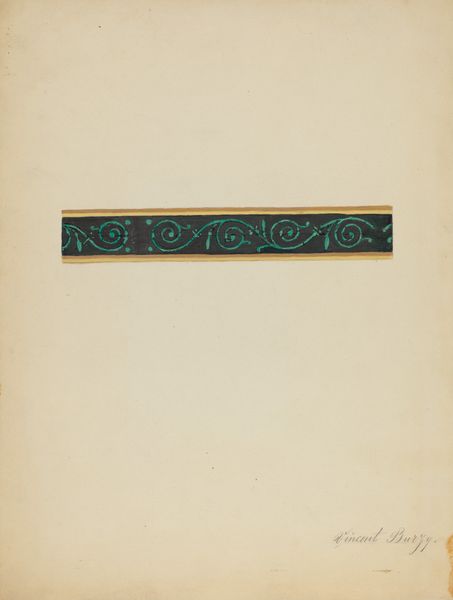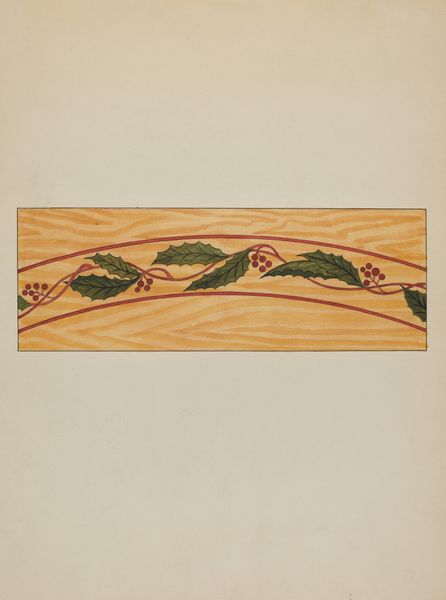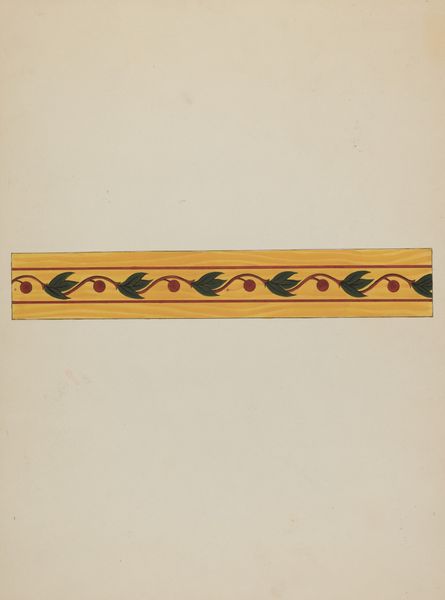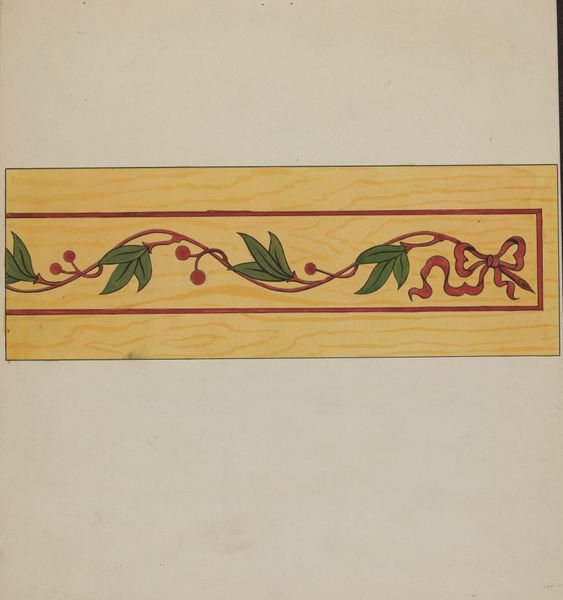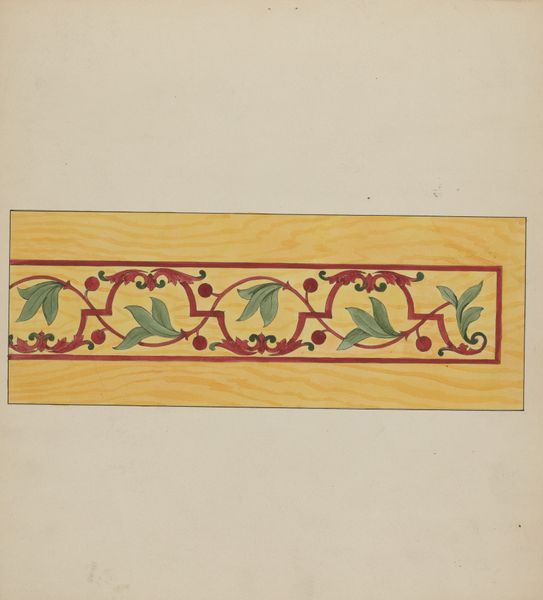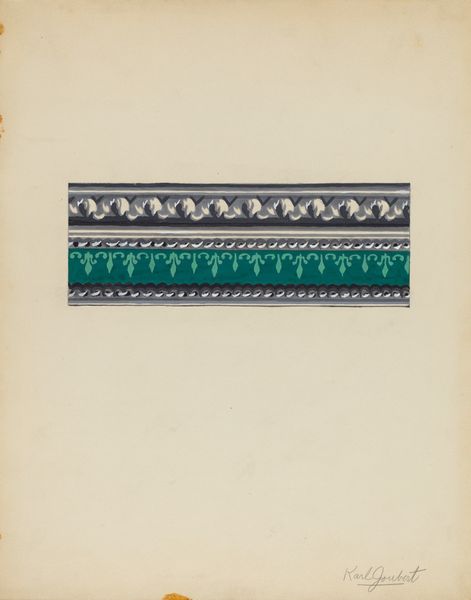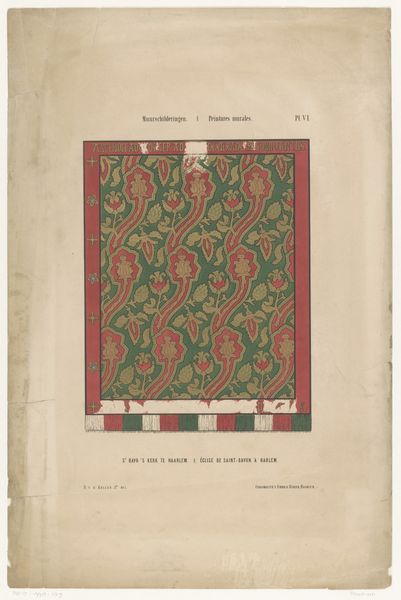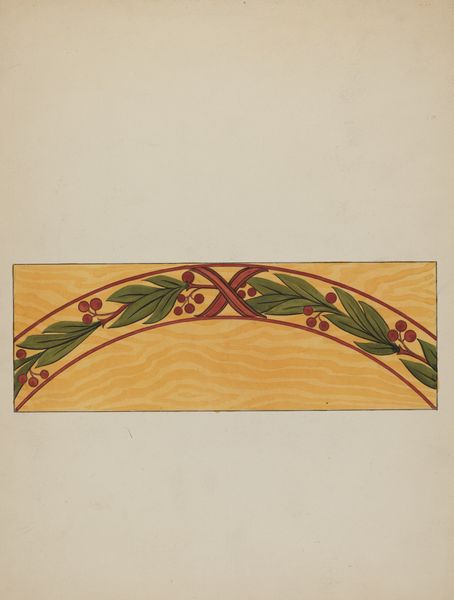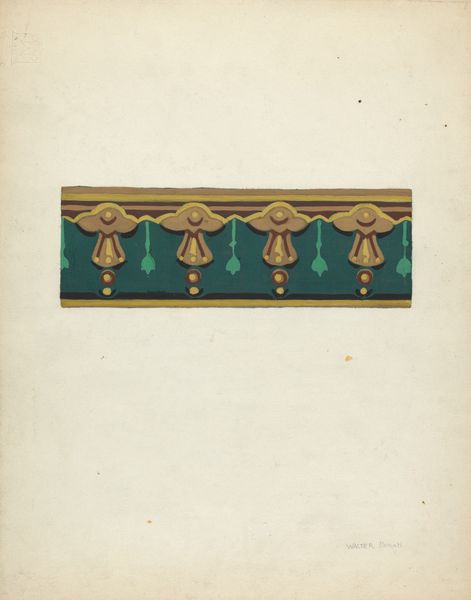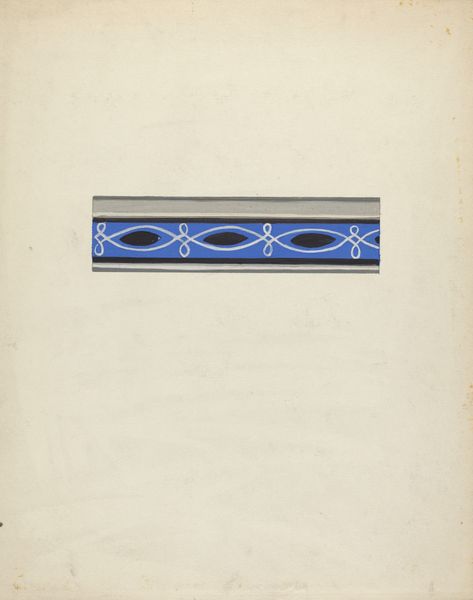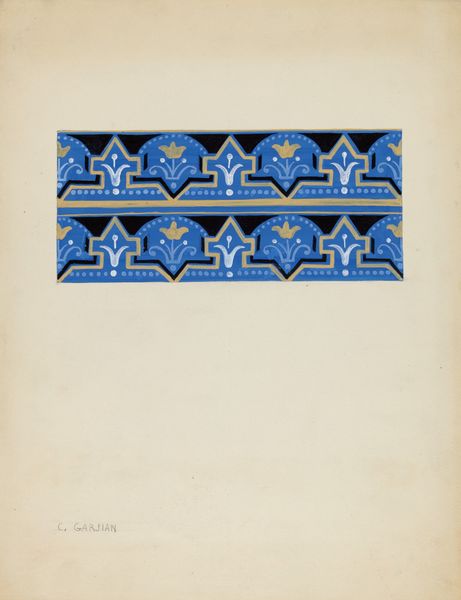
painting, paper
#
painting
#
paper
#
geometric
#
watercolour illustration
#
decorative-art
Dimensions: overall: 30.2 x 22.7 cm (11 7/8 x 8 15/16 in.) Original IAD Object: 2 1/4" wide
Copyright: National Gallery of Art: CC0 1.0
Editor: This is "Wall Paper" from around 1936, created by Alfonso Umana using watercolor and pencil on paper. I'm struck by the composition—a vivid stripe with a floral and geometric pattern. What formal qualities stand out to you in this piece? Curator: I note first the emphasis on the horizontal, segmented into three distinct layers. Above, we have a geometric key pattern. Below, a serpentine vine of leaves and blossoms against a dark emerald field, bracketed top and bottom with gold lines. How do these relate to each other, structurally? Editor: The sharp, repeating angles of the key pattern contrast with the fluid lines of the foliage. The colour palette feels somewhat restrained, and each colour is set off by another to which it relates but remains distinct. Curator: Precisely. Consider the materiality: watercolour and pencil, both lending themselves to precise detail and a certain flatness. There's an explicit acknowledgement of surface. It does not attempt to create three-dimensionality or illusionism, opting instead for clearly defined shapes that interlock without overlapping significantly, forming a unified composition of juxtaposed shapes. The ground of the pattern does not pretend to open up or have recession but instead acknowledges itself as exactly that - surface only. Editor: So, its success is the lack of an intended "depth". Curator: Indeed. Consider the effect created by this overt lack of depth—it demands attention to its materiality, flatness and structural divisions, turning the viewer away from any possible illusionism and to its materiality. What do you make of this piece now? Editor: I see now how the contrast between the geometric and organic shapes, the choice of medium, and even the limited colour palette all reinforce the artwork’s two-dimensionality and decorative function. It's less about representation and more about presentation, where the essence is the thing itself and what surrounds it. Curator: A valuable shift in understanding. The structure dictates how we approach the image.
Comments
No comments
Be the first to comment and join the conversation on the ultimate creative platform.
